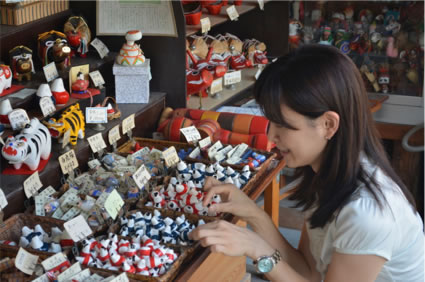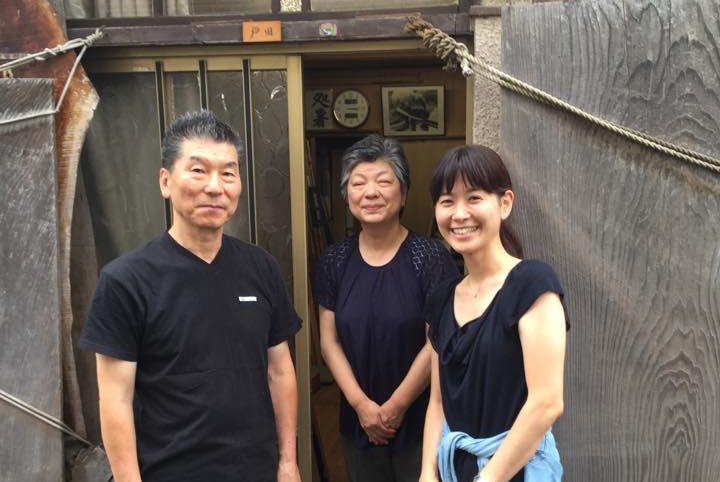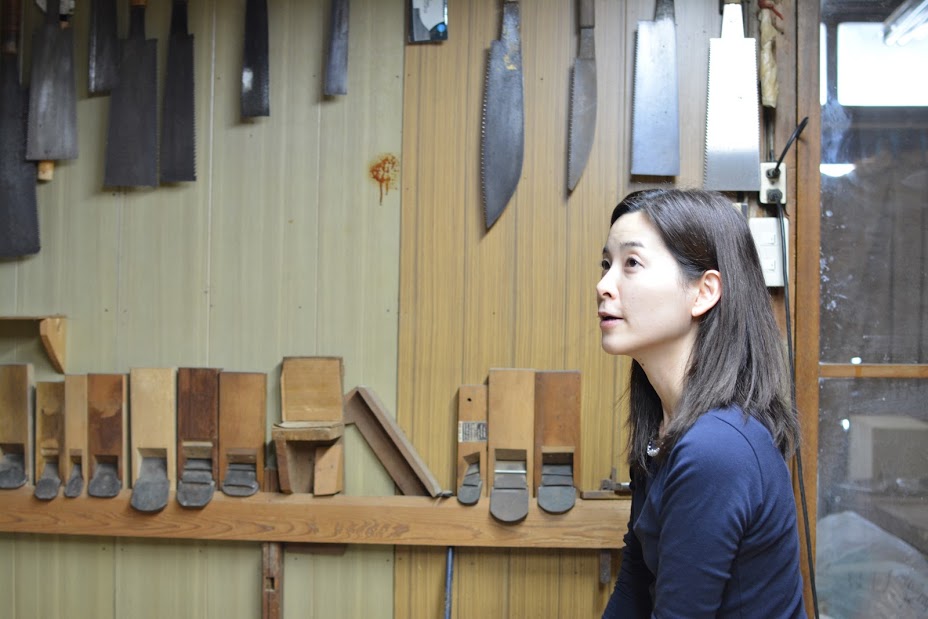I-tsu-tsu Blog
Japanese 5 stars
-
“Aizu Okiagari-koboshi,” Looking for a Five-star Product of Traditional Japanese Culture
Under the name of “Looking for a Five-star Product of Traditional Japanese Culture,” I-tsu-tsu staff members offer you a report on uncompromising traditional Japanese products dispersed all over Japan. The first report is about “Aizu Okiagari-koboshi,” a daruma doll made so as to right itself when knocked over. This is a traditional local folk toy of Aizu region, Fukushima Prefecture. We visited “Yamada Mingei Kobo,” only one folk art studio and shop producing genuine handmade Okiagari-koboshi dolls with fastidious traditional production methods in Aizu region. The origin of “Aizu Okiagari-koboshi” was when a feudal lord of the time made his people make the dolls for sales for the New Year.
Akiko Nakakura 28 March 2017
-
What I Am Making Is Not “Works” !—An Interview with Edo Joinery Master Toshio Toda—
I visited an artisan, Toshio Toda who is Edo joinery (or “Edo Sashimono” in Japanese) master. Edo joinery is designated as a traditional craft by the Minister of Economy, Trade and Industry. In Sashimono, or wood joinery, some pieces of woods are joined together facing each other. It is said that the Japanese name Sashimono came from that action. In Shogi, we use a Japanese word, “Sasu” to describe an action of moving a piece. Sashimono and Shogi have a word “Sasu” in common. As a professional Shogi player, I already had a sense of intimacy to “Sashimono.” (“Shashimono” is a compound word of “Sasu,” a verb with original meaning
Akiko Nakakura 23 January 2017
-
Charm of Shogi Equipment Changing through Long Usage –Interview about Producing Shogi Pieces with Kikusui-san, Artisan of Shogi Pieces
On 9 August, 2016, I interviewed with Mr. Kazuo Sakurai (hereafter Kikusui-san) who made our exquisite Shogi pieces used in the third Kyoku of the 74th-term Meijin Title Match (“Kyoku” is suffix to count Shogi games.) In this interview, I asked him about producing Shogi pieces. The interview was taken place in Tendo City, Yamagata prefecture known for production area of Shogi pieces. In this interview, a son of Kikusui-san, Mr. Ryou Sakurai (hereafter Tousui-san, since he is known as “Tousui-san”) was with us. He is also active as a craftsman of Shogi pieces. The Process of Producing Shogi Pieces Akiko Nakakura (hereafter Akiko): Could you tell me the process
Akiko Nakakura 20 January 2017
-
Five Great People You Should Know to Enjoy Traditional Japanese Culture
We, I-tsu-tsu Co. Ltd., are primarily developing projects to incorporate traditional Japanese culture into child care. I would like to introduce five great Japanese figures to help you discover a new interest in traditional Japanese culture. Why five? Because, our company’s name, “I-tsu-tus,” is a numeral of Japanese origin meaning “Five”. 1. Himiko: A Forerunner of “Yamato Nadeshiko” First, I would like to put down the name of Japanese ancient queen, Himiko. The Japanese phrase “Yamato Nadeshiko” implies that traditional Japanese women are very modest and beautiful. I think Himiko is one of them. Most Japanese people know her name. Needless to say, she was an ancient queen and ruled
Nae Kanamoto 4 November 2016
-
Interview with Traditional Japanese Cultural Artisans
An interview with the owner of Maruhachi-Goban-ten, the specialized Go and Shogi shop who offers a selection of Go and Shogi equipments crafted by skilled artisans. Timeless Masterpieces: Board and Pieces Used in the Meijin Title Match The other day, I posted an article here to share our news that we had purchased a set of Shogi board and pieces to be used in the third Kyoku of the 74th-term Meijin Title Match (“Kyoku” is suffix to count Shogi games.) Good value has been added to the board and pieces, since they were used during the prestigious Meijin Title Match. It is true, but moreover those works are exquisite in
Akiko Nakakura 12 October 2016
If there is anything we can help you with,or you have any questions,
please do not hesitate to contact us.




